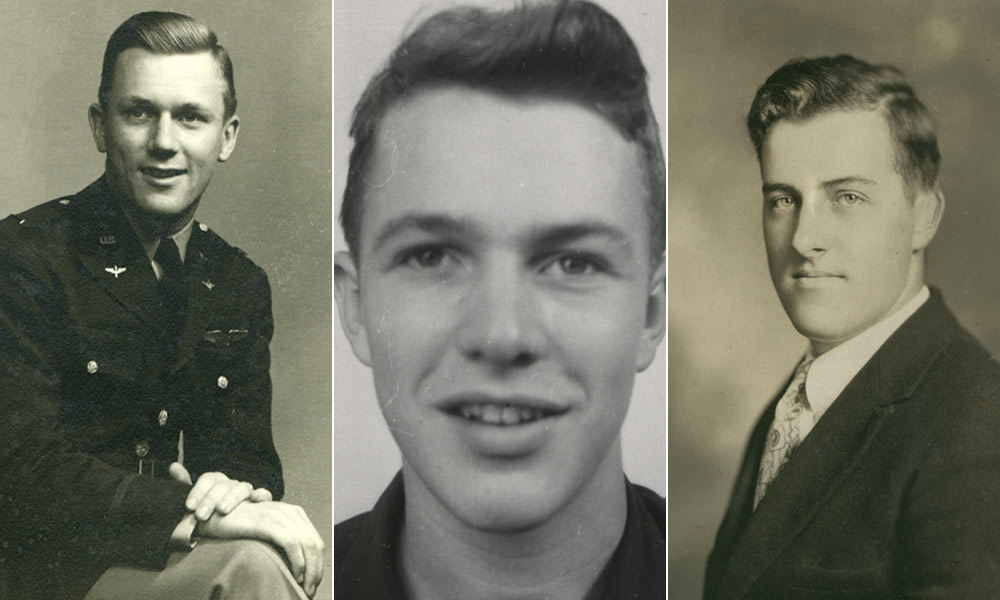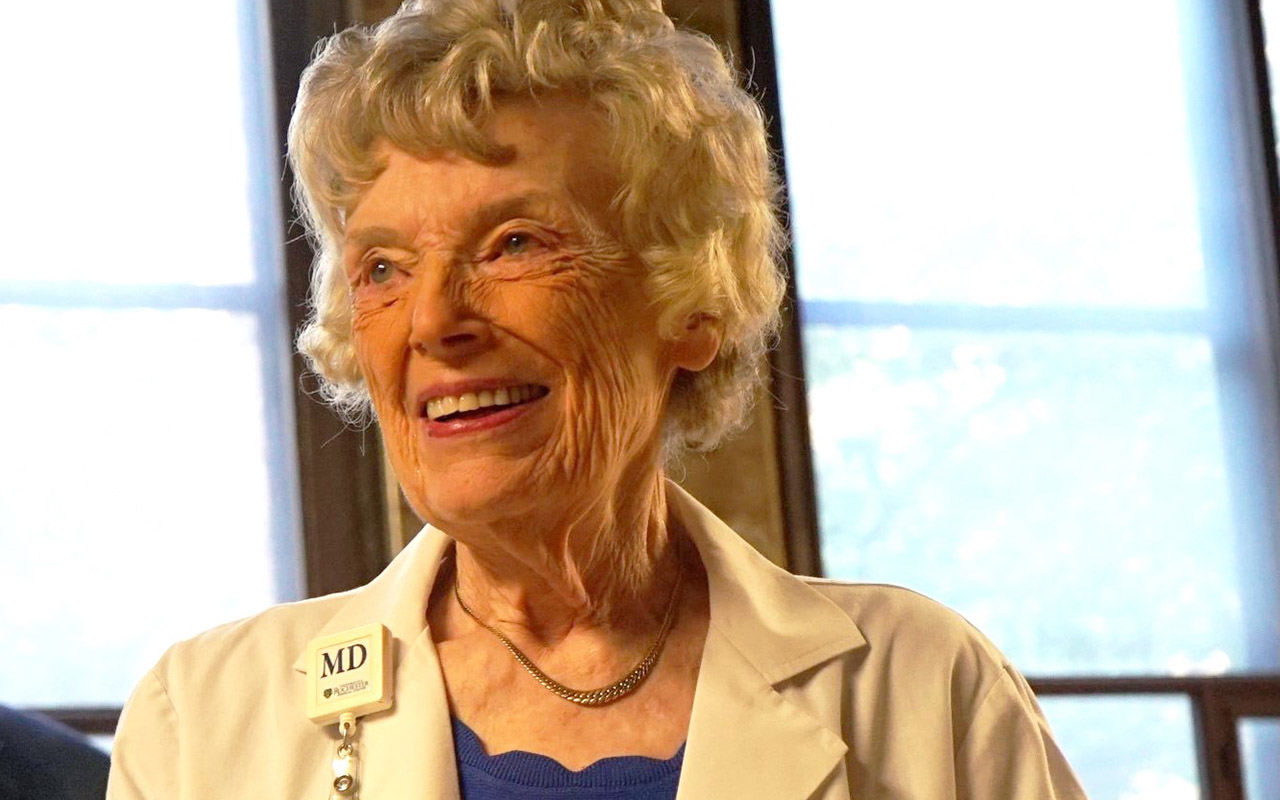This Memorial Day, we profile three former University students who made the ultimate sacrifice for their country.
Members of the University of Rochester community have served their country in wartime since the Civil War, with many having made the ultimate sacrifice.
Those who gave their lives in the Civil War, World War I, World War II, the Korean War, and the Vietnam War are honored on the River Campus with commemorative plaques in Hirst Lounge at Wilson Commons and in the Veterans Memorial Grove in the Freshman Quadrangle. In addition, the NROTC offices in Morey Hall include the Victor Ohanesian Midshipmen Training Room and Thomas King ’66 Wardroom. Ohanesian was an assistant professor of naval science, and King was a student-athlete and NROTC battalion commander. Both were killed in Vietnam.
Rochester’s NROTC office knows of no alumni who died in the conflicts in the Persian Gulf War, the War in Afghanistan, or the Iraq War.
As Memorial Day approaches, here are profiles of three University alumni who gave their lives during military service on behalf of the United States.
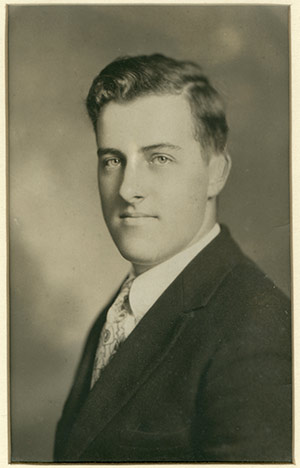
Gordon K. Lambert ’32, ’35 (MD)
Navy, World War II
Gordon Lambert grew up in Rochester and was a member of Beta Delta Gamma fraternity while earning a bachelor of arts in general studies at the University. After receiving his medical degree, he interned at Highland Hospital in Rochester and was commissioned a lieutenant, junior grade, in the Navy Medical Corps in 1936.
He served stints at Naval hospitals in Rhode Island, Washington, DC, and Quantico, Virginia. Lambert married Mary Ellen Kelley in Brooklyn on August 5, 1941, and then was sent to Cavite in the Philippine Islands, where he performed surgical work at the Manila Naval Hospital. “I’m enjoying my work and find living here an entirely new experience,” he wrote in a letter to the University’s Alumni Association.
The world changed that December 7, when the Japanese bombed the American Naval base at Pearl Harbor, Hawaii. Hours later, they also attacked the Philippines, and the aerial attack on Cavite Navy Yard—America’s only ship-repair facility in the western Pacific—left it in flames, with hundreds killed or wounded.
Lambert sent a telegram to his mother that he was “out of the danger zone,” but his safety was short-lived. He was reported missing on May 7, 1942, after the Japanese overtook the Manila Bay area. Sent to Bilibid Prison in Manila, Lambert died there in August 1945 at age 36, just as the war was ending.
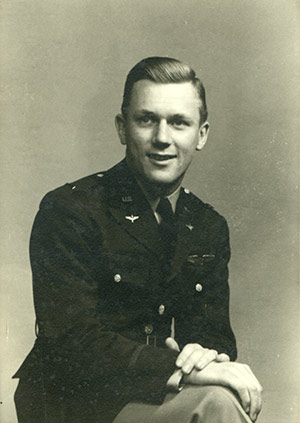
Robert E. Claudius ’46
Air Force, World War II
Robert Claudius had it all figured out.
“Before I decided to go to the University of Rochester, I had decided to start my training in chemical engineering and perhaps work at Kodak after graduation,” he wrote in his admissions essay. “Several friends of the family work at Kodak and tried to explain what chemical engineering is. The rest of my information was obtained through books.”
But Claudius’s college career and life would be cut short. The son of Edwin Claudius ’17, ’40M, who fought in France during World War I, Robert enrolled at Rochester in the fall of 1942 but left in February 1943 to join the Air Force.
After earning his wings training in Atlanta, he was sent overseas that September, stationed in India as part of the 10th Air Force. He rose to the rank of first lieutenant and received the Distinguished Flying Cross and the Air Medal, given to individuals who distinguish themselves by single acts of heroism or extraordinary achievement while in aerial flight.
Claudius was killed in action when his plane was shot down over Burma, India, on March 21, 1945. At 21 years old, he left behind a fiancée, Margaret Taylor. The American Legion Post in his hometown of Irondequoit, New York, is named Warner-Claudius, the latter half in his honor.
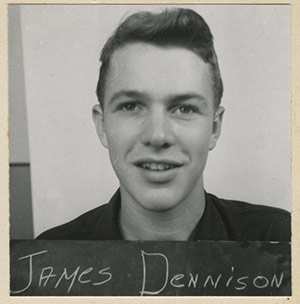
James R. Dennison ’56
Navy, Vietnam War
James Dennison graduated from West High School in Rochester before enrolling at the University, where he received a bachelor of arts in general studies. Months after graduating, he qualified as a Naval carrier pilot, beginning a career that would end in tragedy more than a decade later.
Dennison married Carolyn Carver in December 1962 at the Naval Air Station in Corpus Christi, Texas, and soon after he was attached to a jet bomber squadron in Sanford, Florida. He eventually was promoted to lieutenant, then commander, and was sent to Vietnam.
While piloting a reconnaissance aircraft on a surveillance mission over North Vietnam on New Year’s Day 1968, Dennison flew out to sea approximately 20 miles and turned southeast. No further contact was ever made, and after an intensive search, it was believed the aircraft was shot down. All three men on board were considered missing in action, and their bodies were never found.
More than two years later, in March 1970, Dennison’s wife spent 15 days in Paris, France, pleading with a North Vietnamese delegation for information on her husband. “I will accept it if they say he is not a prisoner,” she said. “I will believe them.”
She left with no answers.
A military marker in Dennison’s memory was placed at Grove Place Cemetery in Rochester.
We remember
Read more profiles of University community members who lost their lives serving in the armed forces.
Sylvanus Wilcox, Class of 1860
Charles Savage, Class of 1861
Lawrence Atkins, Class of 1915
Leon Buckler, Class of 1917
Robert Dennison, Class of 1919
Philip Carey ’39
Robert Zwierschke ’39
Victor OhanesianWalter Menegazzi ’43
Charles Langtry ’45
Bruce Beghold ’47Lester Shade ’47
Spiro J. Peters ’50
George Dykema Jr. ’51Gary Hopps ’61
Donald Thompson ’62
Edward Romig ’63
Thomas King ’66
Armour David Wilcox III ’68


